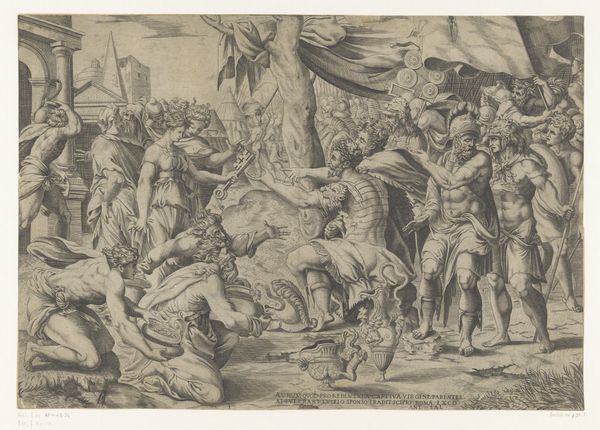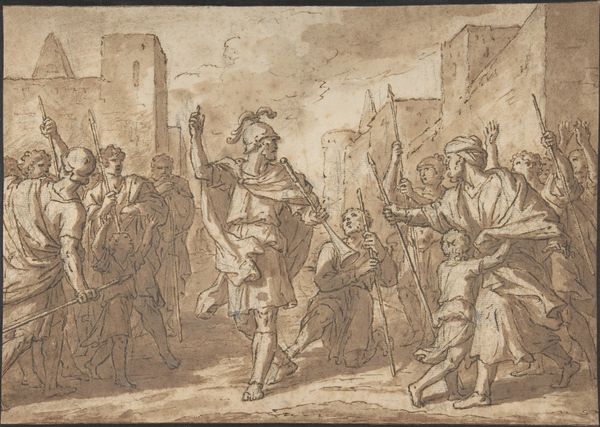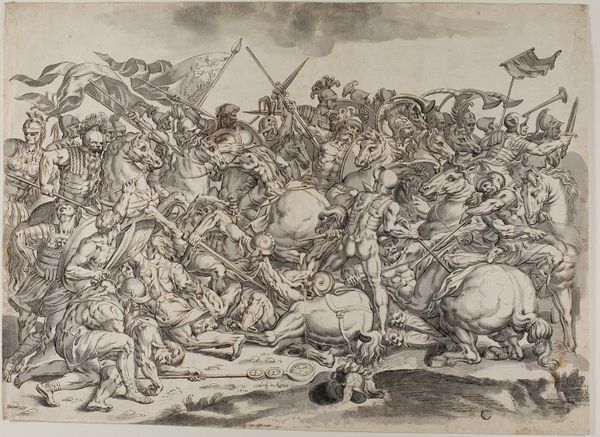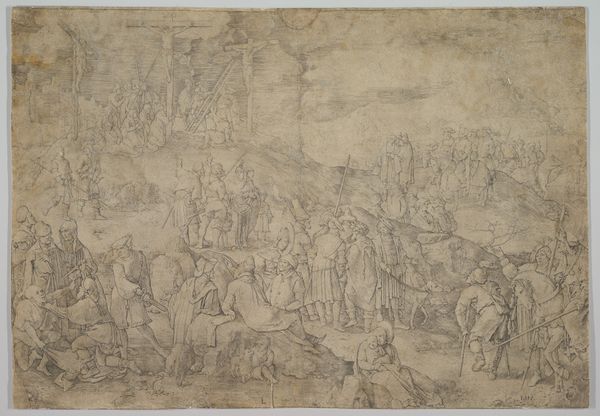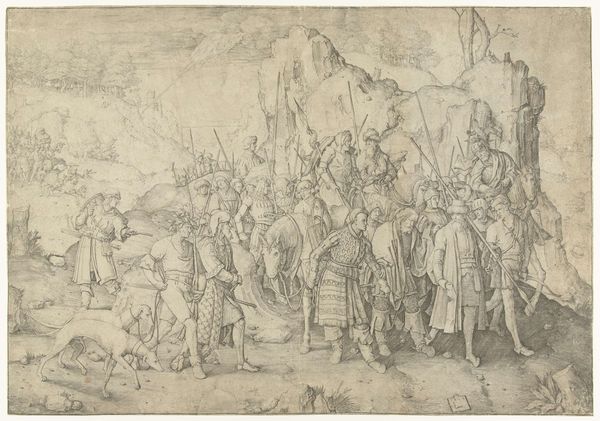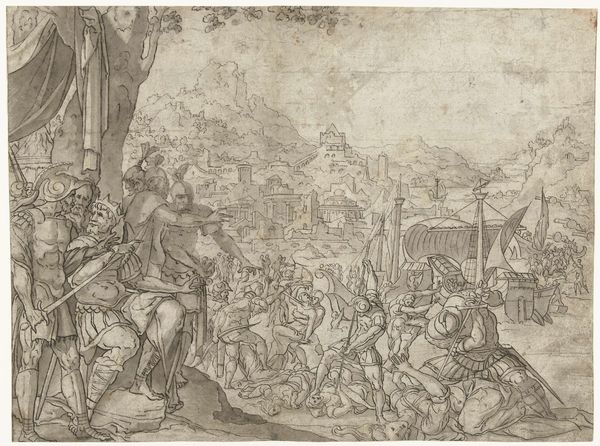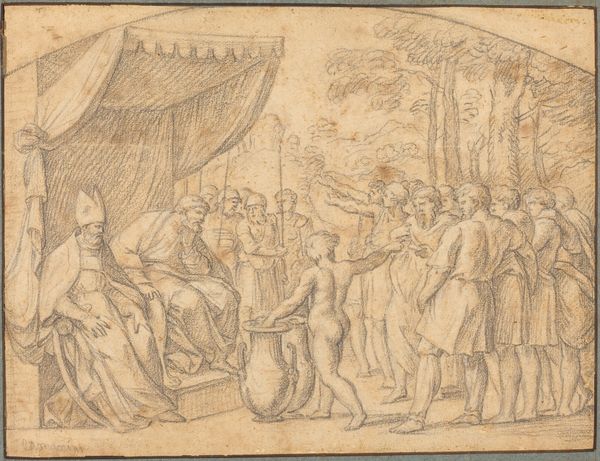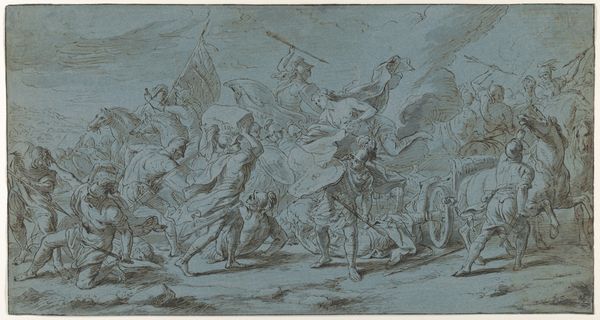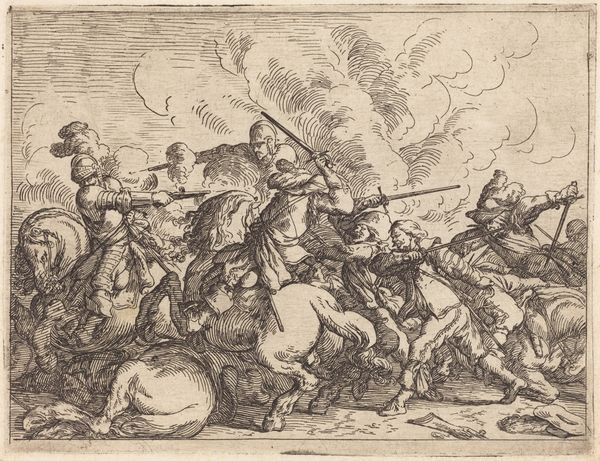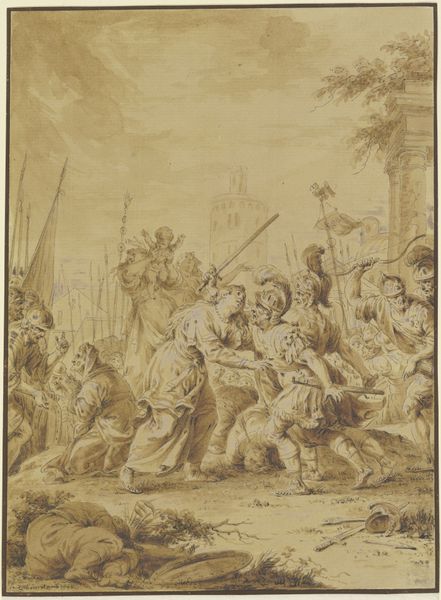
drawing, ink, pen
#
drawing
#
narrative-art
#
baroque
#
ink painting
#
figuration
#
ink
#
pen
#
history-painting
Dimensions: 404 mm (height) x 615 mm (width) (bladmaal)
Editor: Here we have "Korstog," a pen and ink drawing by Gerard van Honthorst, created sometime between 1600 and 1649. The scene is chaotic, a procession or parade, maybe even a conquest. What kind of historical narratives do you see embedded in this scene? Curator: This is an intriguing composition, layered with symbolism related to conflict, triumph, and perhaps even sacrifice. The figures in the foreground, burdened and bound, stand in stark contrast to the mounted figure bearing a standard, almost as if he embodies victory. Think of the psychological weight of symbols and how they contribute to this emotional depth. What underlying cultural tensions do you observe here? Editor: I see the tension between the subdued figures, almost prisoners, and the celebratory atmosphere surrounding the standard bearer. It feels almost…performative. Is this supposed to represent a specific historical event, or is it a more generalized representation of conquest? Curator: The artist invites us to contemplate not just the 'what' of history, but also the 'how' and 'why'. Consider the power dynamics made visible through composition: the triumphant elevated, while the defeated are ground-level. Those gestures aren’t just about immediate events; they carry echoes of countless other narratives of subjugation throughout history. The figures carrying what appears to be Jesus's cross are particularly evocative, linking religious themes to the idea of a "crusade." Does this suggest that the conquest is more of a metaphorical one rather than a territorial grab? Editor: That adds another layer of complexity! I hadn't considered the religious implications, even with the artwork’s title, which feels especially relevant. Thank you! I'll definitely look at Honthorst's art from now on through that lens. Curator: Precisely. This is what Honthorst achieved: condensing centuries of symbolic weight into a single scene. It makes me consider how images like these actively shape, rather than passively reflect, cultural memory.
Comments
No comments
Be the first to comment and join the conversation on the ultimate creative platform.
